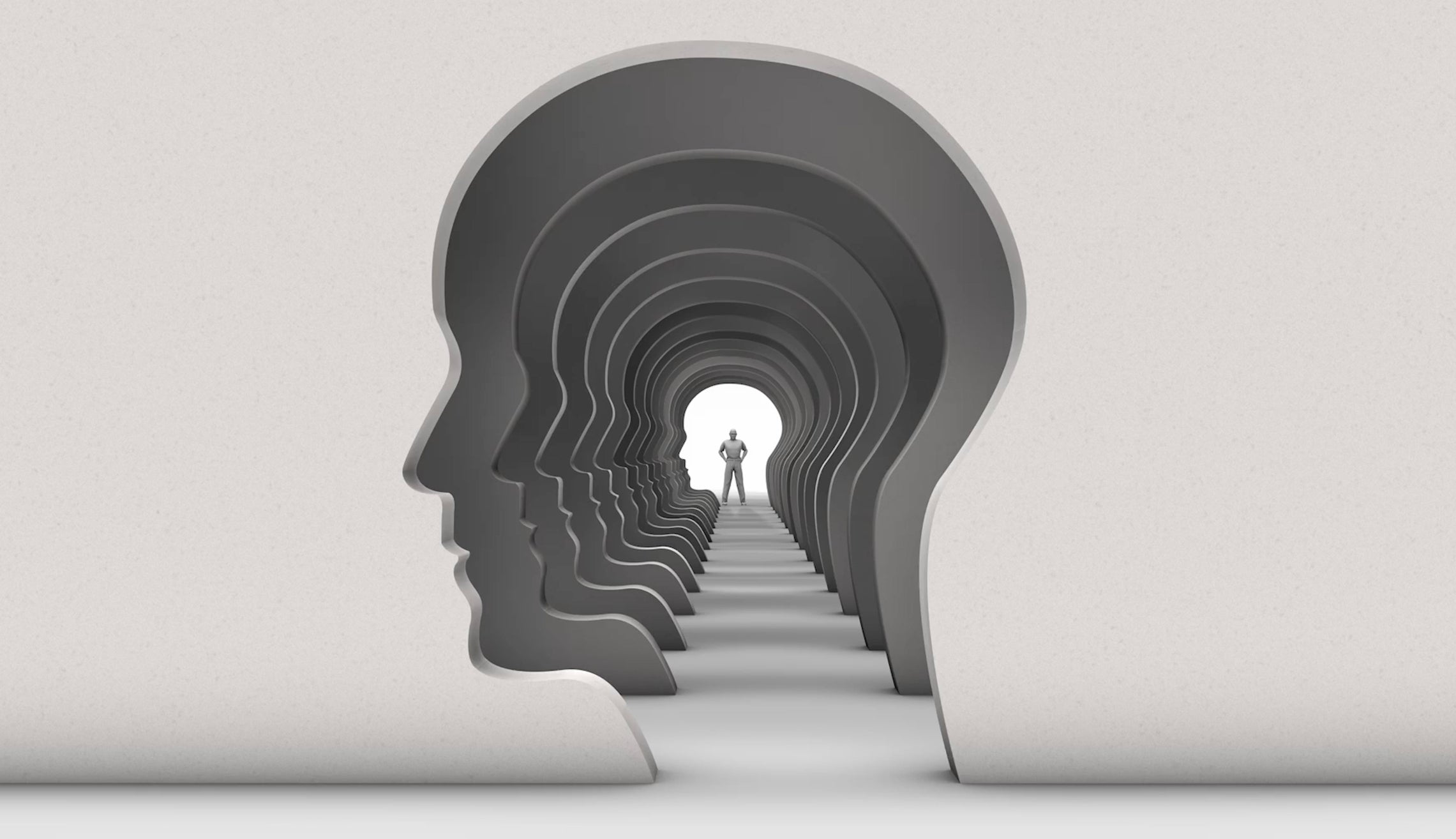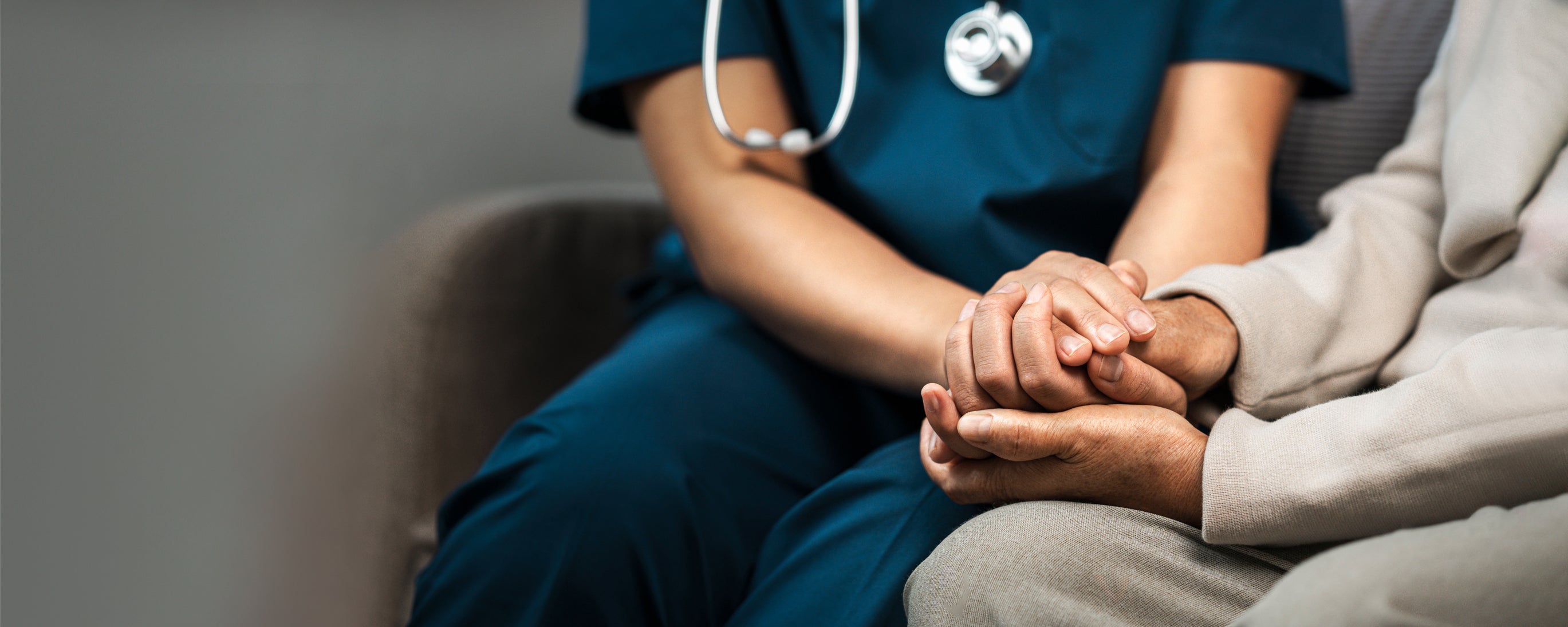Leigh had started to lose her footing long before her diagnosis. Long stretches of exhausting low mood had signalled something unnamed shifting just below her ribs; it was there that despair crept in furtively, and sat rock-like in her stomach. For months, she barely moved from the safety of her bed. Then, almost overnight, there came a flood of energy and a sense of invincibility that turned into sleeplessness, paranoia, and eventually an inpatient stay.
A diagnosis of bipolar disorder type II followed weeks later. The news, though jarring, brought clarity to the chaos. Leigh’s confusing inner world was for the first time given shape, and with that came help – medication, psychotherapy, and community. She thought it would also bring understanding.
In some ways, she was right. Having a language and a clinical reason for behaviour that, throughout her twenties and early thirties, had brought with it disruption and shame prompted a more sympathetic rewriting of her history, and shed new light on the years to come. But it wasn’t simple.
“In the beginning, I was open about my diagnosis,” Leigh, now 36, explains. “But I quickly learnt that people around me didn’t seem to know how to make sense of it. I didn’t blame them – I’d struggled, too. But I wasn’t prepared for just how much stigma I’d need to navigate outside of my own preconceptions and difficulty accepting it all.”

open image in gallery
Bipolar disorder affects 1.3 million people in the UK (Getty)
Many, she says, chose disbelief; family members insisted there had been a misdiagnosis, or said that bipolar disorder – which presents as extreme moods that last for extended periods, and affects 1.3 million people in the UK – “wasn’t something ‘someone like me’ could have”, explains Leigh.
Her boss began to favour other colleagues when allocating new responsibilities, fearing that they would add to Leigh’s stress, and promotions soon became scarce. “The sense was that I was newly incapable,” she continues. “One person condescendingly congratulated me on holding down a job at all. When I was ambitious or enthusiastic, friends – though well-meaning – were cautious or suspicious: was it a healthy drive to pursue my career, or the beginnings of another manic episode?”
In short order, those attitudes became internalised: Leigh began to self-monitor, every feeling suddenly a potential symptom. “I began to second-guess myself constantly, and worry that I was exhibiting symptoms that I couldn’t see but others could. It was a nightmare,” she says. The more relatable symptoms she experienced, she says, like panic attacks or insomnia, were easily addressed – but less palatable ones, such as hypersexuality, suicidal ideation and psychosis, she quickly learned to bury. “My confidence was shot. I started to keep my diagnosis a secret.”
Leigh’s experience is far from unusual. And yet it sits in stark contrast to the current cultural moment, where mental ill health has, at least on the surface, become a more visible and acceptable subject. Particularly on social media, the narrative is that stigma is lessening and that it is safe – and encouraged – to speak up about mental illness.

open image in gallery
Public-facing ‘mental health advocacy’ tends to trade in digestible narratives that, by their very nature, contradict the messy reality of complex, chronic mental illness (Getty)
Online, where pain, recovery and redemption have become a neat package ripe for likes, shares and sponsorship, trauma has become a kind of currency. In this ecosystem, though, only certain versions of suffering are deemed acceptable. It’s only when it is filtered through privilege, beauty or relatability, or when it can be sold back to us in the form of self-care merchandise, that it is able to meet the threshold.
What “the discourse” often ignores is that the so-called mental health conversation is not actually a conversation at all, but a series of monologues – and they rarely include the full spectrum of mental illness. Issues such as burnout, anxiety, maybe depression, are the acceptable face of it. But in the real world, conditions like bipolar, schizophrenia and personality disorders remain misunderstood, and often feared.
This means that people like Leigh find themselves stuck between the unspoken demand to be vulnerable online – to embrace the performative ease of “talking about it” – and the very real consequences of disclosure. Public-facing “mental health advocacy” tends to trade in digestible narratives – tidy, linear, optimistic – which, though important in their own right, by their very nature contradict the messy reality of complex, chronic mental illness.

open image in gallery
In 2025, fewer people believe that someone with a mental health condition can recover (Getty)
Interestingly, it’s not just those in the community who have felt this stigma deepen. Recent research from King’s College London suggests that public attitudes towards mental illness have declined for the first time in a decade. In 2025, fewer people believe that someone with a mental health condition can recover, or that individuals diagnosed with a mental illness should live in a community setting. According to a 2023 survey by Rethink Mental Illness, three in five people in the UK with a mental health condition have avoided seeking help because they fear how they’ll be perceived. The steady work of normalisation is being slowly unravelled.
Astoundingly, around a third of adults admitted they would reconsider becoming someone’s friend, or remaining someone’s friend, if they had a diagnosis of severe mental illness
James Harris, director of communications and campaigns at Rethink Mental Illness
“We ran a campaign last year called Let’s Rethink,” James Harris, director of communications and campaigns at Rethink Mental Illness, tells me. “The results were quite something. We found that around a third of adults wouldn’t feel comfortable sharing a diagnosis of severe mental illness with a friend; that one in three adults wouldn’t want to live next door to someone who is severely affected by mental illness.
“Astoundingly, around a third of adults admitted they would reconsider becoming someone’s friend, or remaining someone’s friend, if they had a diagnosis of severe mental illness.”
Political rhetoric over the last few years has played a corrosive role in shaping these public perceptions, says Harris – “particularly around the benefits system”, he adds. Decades of austerity have gutted NHS mental health services, while simultaneously amplifying social narratives that position sufferers as a burden on society or a public liability.

open image in gallery
Popular culture still often depicts severe mental illness in an extreme way, or dressed up in tropes that fuel the public imagination (Getty/iStock)
Antiquated attitudes attributing mental ill health to weakness have also been steadily growing; mental illness is regularly used as an explanation for everything from mass shootings to rising crime rates in British cities. In this world, “mental illness” is a catch-all explanation for social disorder, and for more complex issues, such as inequality and systemic neglect, which can be a root cause.
Leigh has rarely seen someone like herself – working, managing, failing, rebuilding – in the media, because the everyday reality of her life doesn’t make for dramatic content. Online, it’s the traumatic stories that the algorithm rewards most, particularly from more privileged demographics. The kind of visibility that could begin to shift perceptions isn’t non-existent, but it’s rare.
In this climate, disclosure becomes a risk. “And it’s not just how people are treated on the street, or generally,” says Harris. “It’s about how that stigma intersects with the systems they use to live – the healthcare system, what it’s like to be at work, their own sense of self.”
Leigh says some of her friends who also suffer with complex disorders, like bipolar, borderline personality disorder and schizophrenia, have similar stories to hers: they talk about being seen by doctors who assess their physical symptoms through the lens of their psychiatric history; having dates hesitate or disappear entirely; finding that family members treat them as less capable than before. Stigma, they agree, isn’t just a simple matter of language or a bit of discomfort. It’s structural, systemic, and creeps into all corners of life.
Still, she and others retain some optimism. “There is better awareness, better vocabulary, more public discussion,” Leigh admits. Three years on from her diagnosis, she is now well on the way to accepting her condition – and crucially, understands much more clearly how it affects her life, which allows her to manage it more successfully.
“What I’ve realised,” says Leigh, “is that awareness and understanding aren’t the same thing.” For her, that has meant finding connection not through confessing her struggles online, but through community.
She’s now part of a peer group where people with complex diagnoses swap stories, medication tips and dark humour in equal measure – a space that resists both pity and performance. “It’s honest,” she says, “which in itself is a relief.” Perhaps that’s the truest version of progress: when it’s built not on awareness campaigns or algorithms, but on quiet, consistent support.

